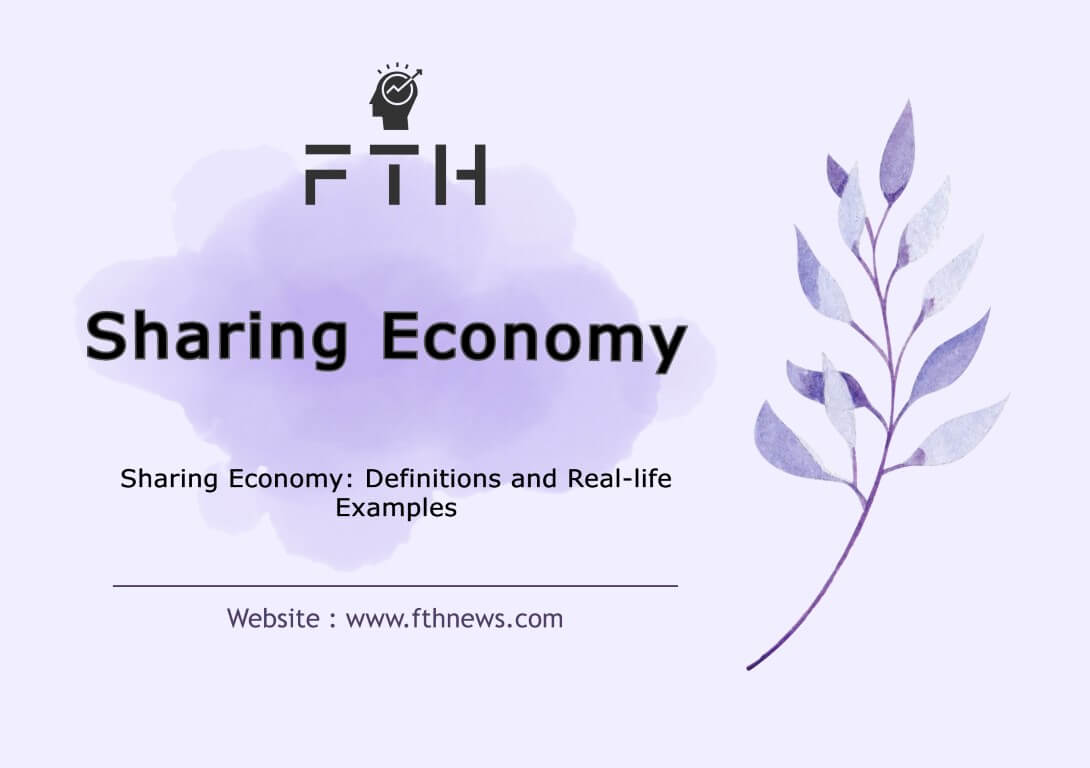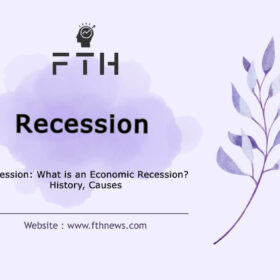
Sharing Economy: Definition and Examples
The concept of the sharing economy, is a simple yet impact idea Peer-to-Peer. It revolves around the sharing of services, items, or products among different individuals, typically facilitated through the Internet.
Even if you haven’t encountered the term “sharing economy” before, you likely have firsthand experience with this phenomenon. This collaborative approach has seen significant growth in many countries around the world.
In this thriving sharing economy, there are various websites and mobile applications that allow you to rent items for specific duration, be it a few hours, a day, or even a week. While some of these services and products come at a cost, there are instances where they are offered for free.
For those who opt to borrow items through this system, the sharing economy can translate into substantial savings compared to purchasing new items for single-use purposes. Moreover, those who are willing to share their own goods or services with others have found an opportunity to earn a decent income.
Similar to traditional rental businesses, several technology companies have developed platforms that streamline the sharing process between individuals. It’s important to note that the sharing economy is still in its infancy, and many people may not be fully aware of the proliferation of companies within this emerging industry.
Globally recognized companies like Airbnb, ride-hailing services such as Uber, and many others are significant players in this industry, and they have played a crucial role in shaping the sharing economy as we know it today. These platforms have become integral to our daily lives, offering convenient solutions that make sharing and accessing services easier than ever before.
What Is the Sharing Economy?
In today’s digital age, thanks to various apps and startups, we can easily hail a taxi, order food, sell items we no longer need, and access a wide range of services with just a few taps on our smartphone screens.
As resources become more expensive and awareness of the benefits of reducing consumerism grows, digital platforms have presented a compelling solution: sharing.
The sharing economy is projected to be worth an estimated $300 billion by 2025. But what exactly is the sharing economy, and where did it originate?
A sharing economy, also known as a collaborative economy, is an economic system in which goods and services are shared among people. This exchange of services and products typically occurs through online platforms.
Attila Marton, a professor of digitization at Copenhagen Business School, suggests that this concept can be divided into three distinct categories:
True Sharing Economy:
This represents the simplest form of sharing, akin to sharing food among family members. A well-known example is Wikipedia, a platform where users voluntarily contribute and share their knowledge.
Gifting:
In this category, individuals share a product or service, such as a homemade birthday cake, with the hope that others will reciprocate in the future. This concept has roots in the early days of the Internet and the open-source movement when programmers freely shared their software and coding with others.
Quasi-sharing Economy:
This concept involves generating income from the informal economy, often through small and unregulated transactions, such as selling street food or providing ride-sharing services like internet-based taxis.
The sharing economy, with its various forms, has revolutionized the way we access goods and services. It has not only provided economic benefits but has also played a crucial role in promoting sustainability and reducing consumerism. As this concept continues to evolve, it is likely to have an even more significant impact on our daily lives and the way we interact with the world around us.
Why Is the Sharing Economy Growing Fast?
The rapid growth of the sharing economy can be attributed to several key factors, making it a dynamic force in the modern economic landscape.
Technology Advancements:
Technology has been the primary driver of the sharing economy’s expansion. Companies have harnessed the power of digitization to tap into the informal economy. The advent of digital platforms, micro transactions, and rigorous monitoring has streamlined the process of online sharing, making it more accessible and trustworthy.
Cultural Shifts:
The sharing economy has played a pivotal role in reshaping the culture of younger generations, particularly millennial and Generation Z. These demographics are increasingly comfortable with access over ownership. For example, services like Spotify and Netflix have shifted the paradigm from owning physical copies of cultural products to providing access to shared resources. This shift is observable in various sectors, including ride-sharing apps. With these applications, users have a convenient and cost-effective means of transportation without the need to own a car.
Investments and Capital:
Large-scale investments have played a significant role in propelling the sharing economy forward. Many sharing economy companies and applications attract substantial capital investments, which has enabled them to capture significant market shares. As these businesses grow, they often employ hundreds or even thousands of people, contributing to their expansion and impact.
In sum, technology, changing cultural preferences, and substantial investments have coalesced to drive the rapid growth of the sharing economy. This economic model has not only transformed how people access goods and services but has also contributed to a shift towards more sustainable and resource-efficient consumption practices. As the sharing economy continues to evolve, it is likely to remain a central force in shaping the future of commerce and consumer behavior.
Benefits of the Sharing Economy
The sharing economy offers a multitude of advantages, which contribute to its sustained growth and appeal. Some of these benefits include:
Easy Rental and Access to Favorite Items:
The sharing economy makes it simple to access and enjoy your favorite items without the burden of ownership. Whether it’s renting a car, a vacation villa, or other possessions, this model enables individuals to have these assets readily available with significantly lower upfront costs and reasonable, temporary expenses.
Flexibility:
The sharing economy offers unparalleled flexibility. Participants can tailor their involvement according to their preferences. Whether you’re looking to manage your working hours, the products and services you provide, or simply seeking an additional source of income, the sharing economy allows you to shape your engagement as it best suits your needs.
Affordability:
The sharing economy enhances affordability by democratizing access to products and services that might have been traditionally out of reach. For instance, internet-based taxi services, car rentals, vacation villas, and even pet care have become more accessible to a broader range of consumers. This affordability can be a game-changer for individuals looking for cost-effective alternatives to traditional ownership.
Value Addition:
An often-overlooked benefit of the sharing economy is its ability to add value to underutilized assets. For instance, if you own a second car that sits idle for extended periods, renting it out can generate significant income. This not only maximizes the utility of your assets but also turns them into revenue-generating sources, making the most of what you own.
Environmental Impact:
The sharing economy often aligns with sustainability goals by promoting more efficient resource utilization. Sharing assets reduces the demand for new products and minimizes waste, leading to a reduced environmental footprint.
Community Building:
Sharing resources and services within a community can strengthen social bonds and promote a sense of connected. This form of collaboration can foster a sense of trust and reciprocity among individuals, ultimately benefiting the community as a whole.
Reduced Congestion:
In urban areas, the sharing economy can help alleviate congestion and reduce the need for excessive parking spaces, as car-sharing services and ride-hailing apps can lead to fewer vehicles on the road.
The sharing economy offers numerous advantages, ranging from individual financial benefits to broader societal and environmental impacts. As this economic model continues to evolve and expand, these benefits are likely to grow and extend to even more aspects of daily life.
Cons of the Sharing Economy:
Regulation and Legal Issues: The sharing economy has raised regulatory challenges in some areas, leading to concerns about safety, taxes, and labor rights.
Inequality: There can be disparities in who benefits from the sharing economy, and it may exacerbate income inequality.
Quality Control: Quality and safety standards in sharing economy services may vary, leading to inconsistent experiences.
Market Disruption: Traditional industries may be disrupted, leading to job displacement and economic shifts.
Data Privacy: Sharing economy platforms collect user data, which raises concerns about privacy.
History of the Sharing Economy
The concept of the sharing economy emerged in the mid-2000, coinciding with the rise of business models inspired by social technologies and a growing awareness of the urgent need for sustainable resource utilization due to factors like population growth and resource depletion. One of the key catalysts behind the sharing economy was the “tragedy of the commons,” a scenario where a finite shared resource must be managed by a large group of people. Individuals face a dilemma: whether to limit their use to preserve the resource for the long term or to maximize their own immediate interests, often depleting the resource for all.
The term “participatory consumption” was introduced by Marcus Felson and Joe L. Spaeth in their 1987 article titled “Community Structure and Participatory Consumption: A Common Methodology.”
In 2011, The Times magazine identified “collaborative consumption” as one of the ten ideas that would change the world.
Driving Forces of the Sharing Economy
Several driving forces have propelled the growth of sharing economy organizations and businesses, including:
Information Technology and Social Media:
The proliferation of enabling technologies, such as accessible smartphones, social media, and free data, has facilitated direct transactions between individuals and organizations. These technologies have significantly reduced the barriers to entry for new sharing economy models.
Increased Resource Cost Instability:
Global development and population growth have intensified the strain on natural resources, leading to fluctuating resource costs and market instability. Traditional manufacturers have faced heightened pressure and are exploring alternative methods for designing, producing, and distributing goods to stabilize costs. This has led to an increased interest in the circular economy approach. The success of such models depends on sharing economy practices like information gathering, sharing best practices, and fostering collaboration.
High Revenue Potential:
According to Forbes, the income generated from the sharing economy is projected to be substantial. This potential for financial gains has further motivated businesses and individuals to participate in and contribute to the sharing economy.
The sharing economy has a rich history rooted in the response to resource challenges, evolving technologies, and a changing cultural attitude toward ownership and consumption. As these driving forces continue to shape the sharing economy, it is likely to expand and diversify, impacting various aspects of our daily lives and the broader economy.
What Can Be Shared in the Sharing Economy?
The sharing economy encompasses far more than just renting a car or leasing out spare rooms like Airbnb. In recent years, hundreds and thousands of collaborative economy platforms have emerged worldwide, catering to a diverse array of needs.
So, why should you consider renting a dog or a car? Here’s a compelling argument:
Imagine a scenario where ten people each own a car that they use infrequently. Through sharing, they can provide access to their cars to those who need them. Concepts like carpooling, where several coworkers share a ride to work, have the power to significantly reduce CO2 emissions and contribute to a more sustainable environment.
Reducing the emphasis on ownership, such as with cars, makes life more affordable. Instead of investing in expensive assets, individuals can opt to rent these items for a fraction of the cost and allocate the remaining funds to other enriching experiences.
Furthermore, the sharing economy has the ability to foster stronger communities. In the example of dog sharing, for instance, individuals who adore pets but can’t afford one can establish meaningful connections with dog owners. This interaction leads to meeting new people and enjoying the companionship of a furry friend without the full-time responsibility of pet ownership.
But, you might wonder if there are downsides to letting others borrow your possessions or, in the case of pets, your dog:
Trust can indeed be a significant concern for individuals sharing their assets. Allowing a stranger to borrow your car or take your beloved dog for a walk can be a bit uncomfortable, especially when you’ve just met the person.
The sharing economy aims to address this issue through the use of rating systems on websites and applications. These ratings offer insights into others’ experiences, helping people make informed decisions about whom to engage with. In case of disputes, resolution mechanisms are in place to help resolve issues. However, the full integration of trust and reliability in the this economy may take some time.
One challenge that currently affects customer satisfaction is the fragmentation of collaborative economy services. Users often need to sign up separately on various platforms to access different services in different areas.
Additionally, individuals who share their spare rooms or offer rides often have to pay substantial fees to platforms like Airbnb and Uber for their services. The cost factor is an area where the this economy is still evolving and finding a balance between platform fees and benefits to users.
Types of Shared Consumption
Shared consumption encompasses a variety of models that enable individuals to access or exchange goods and services. Here are some of the key types:
Product-Service Systems:
In this model, individuals privately own goods or services and share or rent them for consumption through peer-to-peer markets. Examples include renting out a spare room on Airbnb or offering ride-sharing services through apps like Uber and Lyft.
Redistribution Markets:
Redistribution markets focus on the transfer of goods from those who no longer need them to individuals who do. These markets can take various forms:
- Free Goods: Platforms like Freecycle and Kashless enable individuals to give away items they no longer need for free to others who can use them.
- Goods Exchange: Platforms like Swap.com facilitate the exchange of items between users, allowing them to swap possessions they no longer require.
- Selling Goods: Platforms like eBay, Craigslist, and uSell enable users to sell items they no longer need to others, typically for monetary compensation.
Collaborative Lifestyle:
This model revolves around individuals with common needs and interests coming together to share less tangible assets, such as time, space, skills, and money. Advances in technology, including GPS and real-time sharing capabilities, have facilitated the implementation of this system based on location and immediate sharing. Examples include co-working spaces, skill-sharing platforms, and crowdfunding for various projects.
These different types of shared consumption have transformed the way people access goods and services, offering more flexible and sustainable alternatives to traditional ownership and consumption patterns. The sharing economy continues to evolve, and new models and platforms are constantly emerging to meet the evolving needs and interests of users.
Can Blockchain Technology Fundamentally Change the Sharing Economy?
Absolutely. There’s a growing belief among entrepreneurs that blockchain technology has the potential to address the challenges that have limited the growth of the sharing economy.
This belief is rooted in the blockchain’s ability to provide secure and tamper-proof transaction records. With blockchain ledgers, it becomes significantly more difficult to manipulate or compromise transaction data. This means that it’s now feasible to record and maintain detailed information about assets on a global database with a high level of trust and transparency.
Moreover, the concept of smart contracts plays a pivotal role in this transformation. Smart contracts have the power to eliminate the need for this economy platforms to act as intermediaries and can drastically reduce service fees. These self-executing contracts, programmed to automatically execute and enforce agreements when predefined conditions are met, are at the core of the blockchain’s capabilities.
Blockchain startups like Share Ring are actively working to combat the fragmentation of this economy services by offering a unified platform that enables the borrowing and lending of nearly any type of asset. Such platforms have the potential to revolutionize how we access and utilize shared resources.
With a system like this, customers could easily borrow a wide range of items through a single account and make instant payments to the owners using a specialized digital currency. Additionally, these platforms aim to break down geographical barriers, allowing people from anywhere in the world to access and utilize shared resources seamlessly.
Blockchain’s impact on the sharing economy extends beyond just financial transactions. It has the potential to reshape the very structure of how shared resources are accessed, utilized, and managed. This technology introduces a new level of trust, transparency, and efficiency to the this economy, paving the way for innovative solutions that were previously hindered by the limitations of traditional systems.
FAQ
An example of the sharing economy is Airbnb, where individuals rent out their homes or rooms to travelers for short-term stays.
The four main types of sharing economy are:
Product-Service Systems
Redistribution Markets
Collaborative Lifestyles
On-Demand Services
The sharing economy can be a good thing for its cost savings, resource efficiency, and convenience, but it also raises concerns about regulation, inequality, and data privacy.














